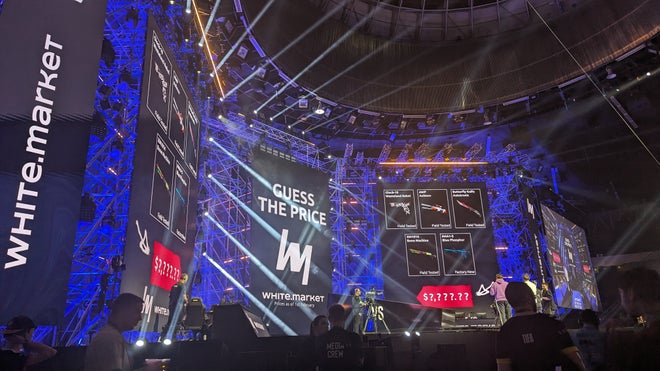We’ve come a long way from the early days of esports, where video was rare and basic text or audio reports were the only way to follow along with a competition remotely. Now, it’s possible to tune in at home and see a show as professional as any on terrestrial TV, with broadcast talent casting, experts explaining plays and comic interstitial segments to fill downtime and fulfil sponsor obligations – all cut with live views of LAN halls or arena stages showing competitors in the throes of sweet victory or torturous, heart-breaking defeat. Yet the advances in remote viewing can actually discourage live attendance – why spend hours or days travelling to an event in person when you can tune in on your phone, PC or TV anywhere in the world?
Clearly, the answer isn’t to make the online experience worse – it’s to evolve the live show by making it meaningfully different. It was this thought that I was struck with while attending the IEM Katowice Counter-Strike 2 tournament in early February, where it was clear that those attending the arena in person were being rewarded with a unique production that went well beyond the the other esports events I’ve attended in the past from ESL and its rivals.
To differentiate that live experience, tournament organiser and production company ESL is cutting away from the stream more frequently to make room for skits, crowd interaction, giveaways and other content. This makes attending the arena more of an experience and differentiates it from simply watching the stream on a large screen with the sound turned up. These are often helmed by broadcast talent, allowing fans in the arena to actually see the casters normally sequestered away in casting booths overlooking the show floor – and perhaps speak with them before and after the segment in impromptu photo and signing sessions, a nice bonus for those with more expensive tickets on the arena floor.
Not every interlude is a winner – crowd participants can set the arena alight with their natural charisma or cause an otherwise-promising segment to drag – but with familiar faces often in tow, even sponsor spots from Counter-Strike skin trading sites can be entertaining diversions.
Of course, ESL isn’t relying on these extras to sell the show – they’re also using humungous screens and speakers that produce bone-shaking bass, with in-game bomb detonations represented with the release of smoke or gouts of flame. While many screens do show the stream – while custom segments aren’t in progress – there are also bespoke portrait-orientation displays showing player stats, time-out progression and sponsors, plus long LED strips that show the progression of the bomb and defuse timers.
It makes for an immersive experience even in an empty arena, but add in the chants and screams of thousands of Polish and international fans cheering their favourite teams and great plays, and you have an experience that goes beyond even live sport and into the realm of theatre.

That’s not to say that stream viewers are missing out either. It’s clear that there’s a huge appetite for novel ideas when it comes to filling time, with light-hearted interviews and full-on comedic skits sharing screen time with expert recaps of past games and statistical analysis of upcoming matches. These pre-recorded sections serve a vital role, freeing up talent and production crew alike to take breaks between matches instead of filling for time endlessly, and there’s no doubt having this kind of bespoke content improves viewing figures versus a loading screen too.
Again, not every segment is a banger, but there are fewer duds than when esports productions started dipping their toes in the water with this kind of content half a decade ago – and some skits end up being more memorable than the actual matches they bookend.
All of this production takes a lot of work to implement. The physical stage is being set up even as the group stages of the tournament are occurring a few weeks earlier, with a suite of dry runs before each live production to ensure displays, cameras, microphones, interfaces, effects and more are all working as they should. (One of my favourite experiences of the tournament was listening to the fake victory speech of a production manager thrust into the role of a team captain, explaining on stage how his imaginary team managed to bounce back from an early defeat to clinch the match to a backdrop of a meme-filled match overlay.) More than 4000 staff are working at IEM Katowice, a staggering figure even given that the headlining Counter-Strike tournament is joined by a smaller StarCraft tournament and a free expo for attendees.
Beyond the drama of the Counter-Strike and StarCraft competitions themselves, it’s been fascinating to see the machinery of esports production up close and personal – and I’m curious to see whether rival tournament organisers will take a similar approach to their live shows as esports continues to evolve.
Disclosure: Acer UK paid for flights to Poland and accommodation in Katowice for the length of the tournament.
